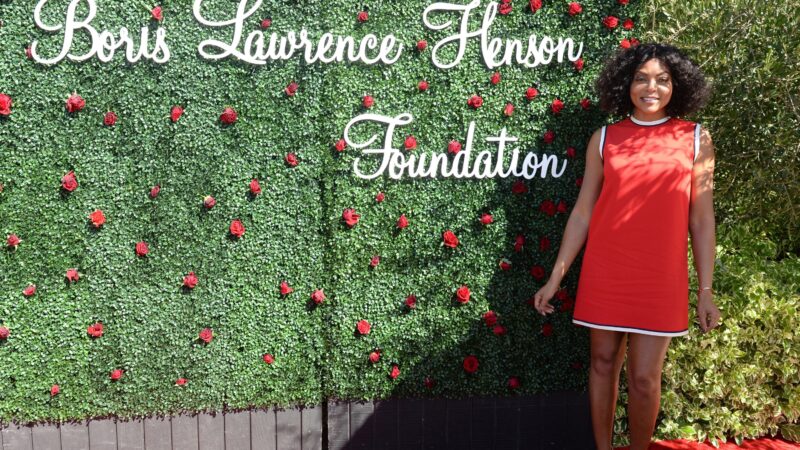By Chrissy Butler | Photo: Peter Prato
“The Last Black Man in San Francisco” is about a young Jimmie Fails, an African-American man who longs to return to the well-designed Victorian-style home in which he grew up, in the city’s Fillmore District, an area once known as the “Harlem of the West.” The neighborhood has changed and the residence has been owned for 12 years by an older white couple. But this house is different: Despite the 19th-century architecture, it was purportedly built by Jimmie’s grandfather with his own hands back in 1946. Jimmie Fails (Writer, and Principle Character in the film) doesn’t approve of the way that the current owners are maintaining it; when they’re not there, he sneaks in and paints the windows and takes care of the plants.
“You can’t hate it unless you love it,” says Jimmie Fails in the movie to two young women on a bus who are complaining about the city they’ve gentrified. I took a moment to reflect on that line which is short, powerful, and straight to the point like a literary Haiku. “You can’t hate it unless you love it.” San Francisco for Jimmie Fails and Director and Co-writer Joe Talbort is home, and as long-time friends, they present San Francisco, the city they love, in a poetic an artful way. However, San Francisco represents many cities across the country where just as Jimmie seems to have become almost Zen about the fact that the San Francisco he loved and grew up in is changing into something else, Cities and Neighborhoods such as Harlem and Brooklyn, NY; Washington D.C., and more are similarly going through a change. Even in my own travels as I circle the streets of Washington D.C., I see the change. Often times, feeling D.C. is slowly losing that which made it rich in culture, music, and food. Let’s be honest, D.C. is no longer ‘Chocolate City’ and its’ music on street corners is being challenged by residents in new constructed high rises; and its signature sauce is being discarded by its’ Mayor.
In the film, Jimmie lives in a room on the outskirts of the San Francisco with his best friend Montgomery (Jonathan Majors). Montgomery is an aspiring playwright. The two men walk the streets and ride Jimmie’s skateboard nostalgic about the city they knew as kids, and for Jimmie in particular, the home seems to represent to him a strong connection to his childhood and is a place of peace for him, perhaps, the long-gone unity of a family that has since fractured. This depiction really resonated with me. I remember when my grandfather died, and my grandparent’s home where all of my aunts and cousins spent Christmases, Thanksgivings, Easters, Birthdays, and Family Reunions was sold. I thought it would forever be a safe house for our family; that no matter where people were in life, they could always be able to return to ‘Grandma’s house’.
I soon found myself enthralled and riveted to my seat as I watched this movie. Fails and Talbot, even though new to the world of film making and acting certainly are no novices. Talbort is a marvelous filmmaker and this film delivered authenticity in showing subtle but poignant hints of the history of Black San Francisco. To further understand the history and understand the transformation of The Fillmore District, explore Bayview Hunters Point and the Hunters Point Shipyard which once employed thousands of African-Americans from the 1940’s. The film also brings to light gentrification in a city that is slowly displacing and forgetting about the community.
The movie also does a beautiful job of showing black men and the bonds of friendship in a totally different light. They are vulnerable, loving, and emotional in a way that is rarely brought to the big screen. During MadFlavor TV’s interview with Actor Rob Morgan (James Sr.) and Actress Tichina Arnold (Wanda Fails), the two spoke heavily about how THIS FILM deviated from the typical portrayal of Black Men as thugs, or misogynistic, or “Drug Dealers,” Rob Morgan interjected. The movie debunks the myth that men must act or carry themselves in a certain manner to be considered masculine. Rob even ‘pseudo jokingly’ references Prince in our interview, pointing out how the artist was unique in his dress and ways that he lived his life, but was still very masculine in a society that would otherwise question his masculinity. “Black people can swim!,” Tichina Arnold laughs…But she is right. Black people are multi-faceted and “Last Black Man in San Francisco” is not afraid to share that, especially with the men in this film. I found that to be refreshing.
All in all, I found “Last Black Man in San Francisco” to be an artistic masterpiece and to be a breath of cinematic fresh air.
-

- Jimmie Fails stars as Jimmie Fails in THE LAST BLACK MAN IN SAN FRANCISCO, Credit: Peter Prato / A24
-

- LBMISF_00342 (l-r.) Isiain Lalime stars as Gunna, Antoine Redus as Nitty, Jeivon Parker as Fresh, Jordan Gomes as Stunna and Jamal Truelove as Kofi in THE LAST BLACK MAN IN SAN FRANCISCO, Credit: David Moir / A24
-

- Danny Glover stars as Grandpa Allen and Jonathan Majors as Montgomery Allen in THE LAST BLACK MAN IN SAN FRANCISCO, Credit: Courtesy of A24
-

- Rob Morgan stars as James Sr. and Jonathan Majors as Montgomery Allen in THE LAST BLACK MAN IN SAN FRANCISCO, Credit: Courtesy of A24
-

- Jonathan Majors stars as Montgomery Allen and Jimmie Fails as Jimmie Fails in THE LAST BLACK MAN IN SAN FRANCISCO, Credit: Peter Prato / A24
You Might also like
-
ATL HOMICIDE
ATL Homicide thrusts its viewers smack dab into the middle of the crime scene where you almost become one of the detectives and have the opportunity to solve the “whodunit”. Moreover, what makes this show great is the fact that these are real cases that are solved by to very real detectives: Quinn and Velazquez are two Atlanta Police Department veterans.
-
FAT JOE TO HOST THE 2022 BET HIP HOP AWARDS
Whether in or out the loop of the current culture, the raw and illicit style of female rappers can catch you looking side-eyed or feeling carefree.
-
Mental Health In The Black Community
Taraji P. Henson and Bashea Williams talk about Mental Health Issues in the African American Community and her new foundation dedicated to her father.








